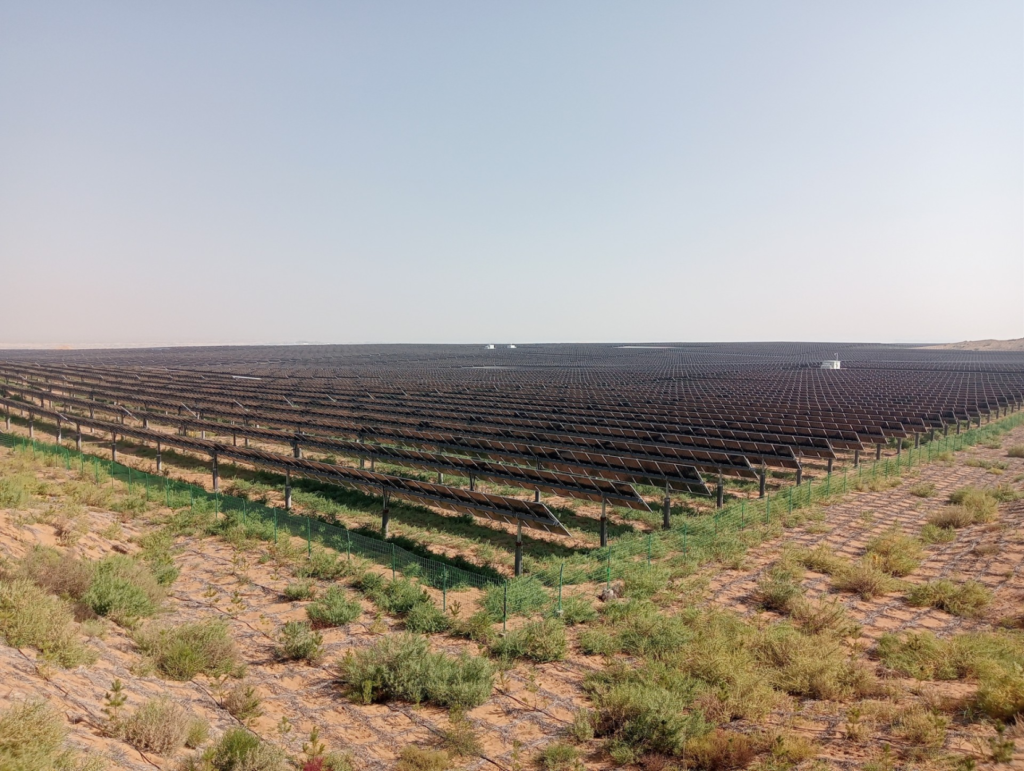Harnessing the sun and the sand: How China’s solar project offers lessons for Vanuatu’s renewable future
October 17, 2024 9:46 pm | Posted in Business News | Share now TwitterFacebook
By Nicholas Mwai.

During my six-day visit to Ningxia Province in Northwest China, I witnessed one of the most inspiring projects that could hold the key to tackling climate change for Pacific nations like Vanuatu.
In the heart of the desert, the Zhongwei Longyuan New Energy Company has been leading a massive solar energy project that not only generates renewable energy but also rehabilitates the surrounding ecosystem.
This solar project, which started in 2022 and is scheduled for completion by 2025, spans an area approximately the size of 2,600 basketball courts.
I had never seen a solar system of this magnitude before, and what struck me most was how it merged innovation with environmental care.
Pan Zhanguo, Chief Engineer of Zhongwei Longyuan New Energy Company, explained the project’s environmental strategy: “We’ve planted 42 types of grass to resist pests and support the ecosystem. We use higher brackets to elevate the solar panels, ensuring that the plants beneath them can grow without interference. In this way, we maximise both solar energy production and environmental protection.”
What I found remarkable was how the panels, raised to heights of up to 105 metres, not only produced clean energy but also acted as shields against sandstorms.
The plants they’ve introduced beneath the panels help stabilise the desert sand, preventing it from burying the solar arrays. Pan added, “The solar panels help manage soil erosion by slowing wind speeds and retaining moisture in the soil, enhancing both the ecosystem and the efficiency of the photovoltaic systems.”
The project has been running for 15 months, generating 1.8 billion kilowatt-hours annually in its first phase, which can power 1.5 million households.
Once fully operational, it is expected to produce 20 million kilowatt-hours per year. The effort not only contributes to China’s renewable energy goals but also demonstrates how solar farms can actively combat environmental degradation.
By increasing forest coverage from 0.5% to 25%, and aiming for over 40% by 2025, this project is proving that solar energy can coexist with ecosystem restoration.
Beyond its environmental achievements, the project integrates agriculture by cultivating crops like olives and raising livestock, creating economic benefits for the local community.
As Mr. Pan noted, “The initiative involves comprehensive strategies, from energy production to supporting agriculture. The plants beneath the panels will eventually sustain livestock like sheep and poultry.”
The success of this project offers a compelling model for Vanuatu and other Pacific Island nations. With climate change posing an existential threat to our islands, transitioning to renewable energy while protecting our environment is not just a goal—it’s a necessity. If Vanuatu could implement similar solar initiatives, we could reduce our carbon footprint, foster sustainable development, and create a more resilient future for our people.
My experience in Ningxia has been enlightening. I now see that China is not just a country of rapid industrialisation, but one of innovation and environmental leadership.










